Fire Emblem Awakening – Review
by Keegan
|
 I think it’s best that I’m straight with you; I basically bought my 3DS so I could keep playing Pokémon. For everything else my DS had proved more than adequate, and though the hinges had finally given up and the top half was floppier than something comically floppy, it had proved to be a wonderful companion on my journeys, scarce though they may have been. I wasn’t expecting the same from my 3DS. It struck me as too crazy, too inventive, too new. Once I got my hands on it however, I was a little bit in love. My 3DS was everything my old faithful DS was and more. The only thing holding it back was the lack of a killer game – Pokémon aside – that could and would keep my attention, to the exclusion of even my console games, and in Fire Emblem Awakening it got it.
I think it’s best that I’m straight with you; I basically bought my 3DS so I could keep playing Pokémon. For everything else my DS had proved more than adequate, and though the hinges had finally given up and the top half was floppier than something comically floppy, it had proved to be a wonderful companion on my journeys, scarce though they may have been. I wasn’t expecting the same from my 3DS. It struck me as too crazy, too inventive, too new. Once I got my hands on it however, I was a little bit in love. My 3DS was everything my old faithful DS was and more. The only thing holding it back was the lack of a killer game – Pokémon aside – that could and would keep my attention, to the exclusion of even my console games, and in Fire Emblem Awakening it got it.
Although I’ve dabbled in Fire Emblem before, I’ve never really been a hardcore fan of the series. I had Shadow Dragon on Old Faithful, but only really played it when I was overloaded on Pokémon. Somewhere along the lines I finished it, but in a lot of ways it passed me by; I enjoyed the strategy elements, and I liked the way that there was some interaction between characters, but it never really had much impact on me. Awakening only really caught my eye because of a personal drought; I was looking for something to play on my handheld, and it looked like something that would keep me occupied on long journeys. It turned out to be so much more.
Fire Emblem is a long running series of turn based strategy titles set in a fantasy universe. It’s published by Nintendo, and though the first few iterations of the series were exclusive to Japan they’ve been published in the west for about a decade. It’s best known for its characters Marth, Roy and Ike appearing in Super Smash Bros Melee, which is hardly an accurate representation of the series or how they play.
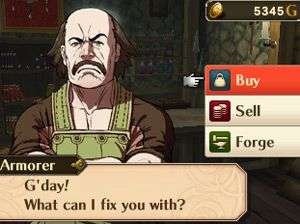 In fact, they’re a far more considered and intense experience, with a heavy focus on making the players think. I’ve played few titles that are more tactical, or more punishing, than Awakening, despite its familiar feel. The actual mechanics are nothing particularly unique, with most encounters feeling much like any other turn-based strategy. You move units around the map, fighting enemies called the Risen. Usually the enemies far outnumber your men, but if you are smart with positioning and tactics you should usually walk away without any casualties, especially since you are told before entering battle how much damage you will do, the chances of your attack hitting and even whether you should bother hoping for a critical hit.
In fact, they’re a far more considered and intense experience, with a heavy focus on making the players think. I’ve played few titles that are more tactical, or more punishing, than Awakening, despite its familiar feel. The actual mechanics are nothing particularly unique, with most encounters feeling much like any other turn-based strategy. You move units around the map, fighting enemies called the Risen. Usually the enemies far outnumber your men, but if you are smart with positioning and tactics you should usually walk away without any casualties, especially since you are told before entering battle how much damage you will do, the chances of your attack hitting and even whether you should bother hoping for a critical hit.
However, things begin to feel less typical the moment your units begin to enter combat. Fire Emblem operates on a rock-paper-scissor system, with three distinct types of weaponry that interact with each other. The basis of the system is that swords are strong against axes, which are strong against lances, which are in turn strong against swords. Units can also use ranged weapons in the form of bows and magic which, although outside of the system, have their own strengths and weaknesses. This creates an extra layer of tactics that bears thinking about and constant supervision, as each character is only able to wield certain weapons. On top of that, should you make a mistake and advance too far, or get into a fight with the wrong character or weapon there is a harsh punishment doled out: permadeath.
Admittedly this is not the only turn based strategy to play the permadeath card – XCOM instantly comes to mind as a recent example – but few have the same impact as Awakening. Over the course of the campaign it’s easy to become attached to the characters that you control – especially when they begin developing relationships – so the loss of any of them can be devastating. Some of my most intense moments in gaming have been had over the last few weeks as I urged my little companions onwards. Once or twice I genuinely choked up as I watched one of the units that I had shepherded all the way through the campaign slowly fall to their death (there is a dramatic slow-mo for the occasion). I was so devastated by the loss of these characters because, to me, they weren’t simply units. I was invested in the characters, and had not only guided them through the many battles that they faced, but also shaped their very lives. By allowing the player to glimpse and mold the lives of the characters that they control, a remarkably emotional bond is formed.
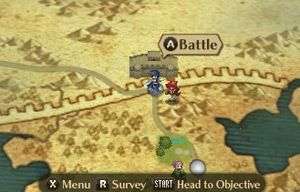 This dialogue, interaction and relationship building between an interesting cast of characters is Awakening’s strongest feature, providing one of the most engrossing and fascinating narratives I’ve experienced, in a game or otherwise. It all revolves around two core characters; Chrom, the main protagonist of the story, and the player character, who can be named whatever you desire. In my case he was Natsu, a tall man with a scarred face and pink anime hair. There are customisation options that fall somewhere between limited and plentiful – there are a fair few, but not quite as many as I’d ideally like.
This dialogue, interaction and relationship building between an interesting cast of characters is Awakening’s strongest feature, providing one of the most engrossing and fascinating narratives I’ve experienced, in a game or otherwise. It all revolves around two core characters; Chrom, the main protagonist of the story, and the player character, who can be named whatever you desire. In my case he was Natsu, a tall man with a scarred face and pink anime hair. There are customisation options that fall somewhere between limited and plentiful – there are a fair few, but not quite as many as I’d ideally like.
Along with Chrom this player character can work and establish a relationship with any other character, and there are a fair few to meet. Relationships are built by fighting battles together, either by using a pair-up feature that essentially combines two units into one for the duration of the battle, or by simply attacking an enemy unit while standing next a friendly one. As relationships between characters grow, so does their ability to fight together, providing bonuses to a myriad of attributes when they take on enemies as a team. If they have a particularly high relationship (they’re ranked from C to S) there’s even the possibility the support combatant – the person who is not attacking or being attacked – might defend their partner from an attack or even join in and land an extra blow on the enemy.
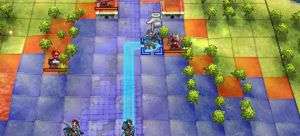 Every time a relationship between two characters improves a notch the player is treated to a little scene that shows their relationship building, often providing some back-story as well. As relationships between your squad improves, so does your understanding of their motivations and personal stories, making them feel more and more like real people as the game goes on, which only makes it worse when one of them dies.
Every time a relationship between two characters improves a notch the player is treated to a little scene that shows their relationship building, often providing some back-story as well. As relationships between your squad improves, so does your understanding of their motivations and personal stories, making them feel more and more like real people as the game goes on, which only makes it worse when one of them dies.
There is plenty of opportunity for them to die as disastrous scenario after disastrous scenario is thrown at you. The story accommodates this well enough, beginning with the discovery of the player character unconscious and amnesiatic – that’s totally a word – in a field by Chrom whilst on patrol. With no memories apart from his or her name, the player character is essentially adopted by Chrom as if they were a stray cat. From that point on they are a part of the Shepherds, Chrom’s crack squad of elite knights who protect the realm – or Halidom as they call it – of Ylisse. As the small squad who discovered the player character is returning to the capital of Ylisse they are waylaid by a dark enemy called the Risen, who are a completely evil force who seem to want nothing more than to kill, well, everything. They fight off the Risen with the assistance of mysterious swordsman who claims to be Marth, the hero of legend, who disappears after the fight. Ylisse is also under attack by the neighbouring kingdom of Plegia, who have long held a grudge against Ylisse. Marth and the Shepherds rush to the defence of Ylisse, the climax of which starts the story in earnest.
It’s remarkably difficult to avoid spoilers on this bit, but I’m going to my best, because this next bit is a vital mechanic in Awakening. In order to prevent a future where a vital character has died and the world has been taken over by a dark overlord, several youngsters somehow make their way back in time. They are the children of the current Shepherds, who are trying to help their parents escape their future. In all honesty this is perhaps my least favourite part of the story, as it does open up the door for some paradoxes along the way, but thankfully it redeemed itself late in the story with some very clever tying up of ends. I admit that I was sceptical at the start (I’m not the biggest fan of time travel) but it managed to convince me otherwise, especially as it makes it possible for the story and the clever relationship mechanic to intertwine.
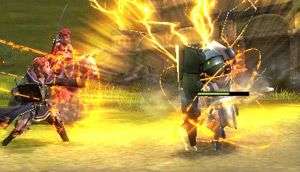 When a relationship between two characters reaches the highest rank they will get married, and when they do they invariably have a child or two. At a certain point in the story those children can be recruited to join the fight, as long as you complete the feud that they are encountered in, and they are convinced by Chrom to switch sides. Presuming you do, and they survive a few battles, you’ll get the opportunity to upgrade each of your characters, and even have the opportunity to change their class if need be, but only once your character reaches a certain level.
When a relationship between two characters reaches the highest rank they will get married, and when they do they invariably have a child or two. At a certain point in the story those children can be recruited to join the fight, as long as you complete the feud that they are encountered in, and they are convinced by Chrom to switch sides. Presuming you do, and they survive a few battles, you’ll get the opportunity to upgrade each of your characters, and even have the opportunity to change their class if need be, but only once your character reaches a certain level.
As characters defeat enemies their levels improve, up to a maximum of twenty (some other characters have higher caps) and alongside that there is a completely separate system that dictates the weapons skill of the character, which in turn dictates what weapons they can use. Changing class can change the weapons that a character can use, but not the level of skill they have with it. This can be a real salve, especially if (like me) you lose your only archer character within the first few missions. In order to change class you require ‘seals’ that cost a fair chunk of the money you can scrape together, much like the weapons you are almost constantly buying.
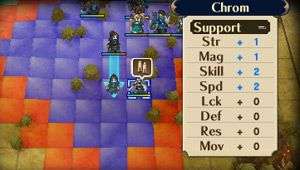 Each item of weaponry you equip your squad with is only good for a set number of uses, which can vary anywhere between three and forty-five. The general rule of thumb is that the more damage the weapon lays out, the more wear and tear it takes and so it has fewer uses. Weapons can be repaired by giving up weapons of the same type in order to combine their uses, or simply replaced by paying a visit to the blacksmith. Better yet, if you find a weapon that you really love (or if you can’t find anything that suits) you can upgrade and improve that weapon to your specification. You can even name it.
Each item of weaponry you equip your squad with is only good for a set number of uses, which can vary anywhere between three and forty-five. The general rule of thumb is that the more damage the weapon lays out, the more wear and tear it takes and so it has fewer uses. Weapons can be repaired by giving up weapons of the same type in order to combine their uses, or simply replaced by paying a visit to the blacksmith. Better yet, if you find a weapon that you really love (or if you can’t find anything that suits) you can upgrade and improve that weapon to your specification. You can even name it.
Some of the characteristics are limited to the weapon that you used as source material, most obviously the design. This is seldom too much of an issue, as most of the weaponry (along with the rest of the game) looks great. Everything has been given something of an anime twist, with swords rather oversized and armour similarly extravagant. During battles and cutscenes the characters appear in full 3D glory (which is actually a little iffy – why doesn’t anyone have feet!?) but during conversations they are represented by beautiful 2D drawings that really put the 3D work in its place.
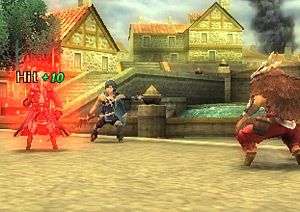 Despite the lack of feet and being a bit outclassed by the 2D work, the character models are actually pretty good, and watching them flow through their battle animations is a real joy and delight. Watching them toddle about in cut-scenes is endearing as well, so the divide between the 3D and 2D stuff is pretty much a non-issue. In reality it’s actually a nice change from previous Fire Emblem titles where everything was done in the same 2D style as the conversations, which might account for the slight variance in quality. That said, when the 3D slider is up the quality difference grows even smaller – Awakening looks phenomenal in 3D. Characters pop, everything is distinct and clear and it truly is a joy to watch.
Despite the lack of feet and being a bit outclassed by the 2D work, the character models are actually pretty good, and watching them flow through their battle animations is a real joy and delight. Watching them toddle about in cut-scenes is endearing as well, so the divide between the 3D and 2D stuff is pretty much a non-issue. In reality it’s actually a nice change from previous Fire Emblem titles where everything was done in the same 2D style as the conversations, which might account for the slight variance in quality. That said, when the 3D slider is up the quality difference grows even smaller – Awakening looks phenomenal in 3D. Characters pop, everything is distinct and clear and it truly is a joy to watch.
Even with the graphics quality varying on occasion, Fire Emblem Awakening is truly a standout title. In the continued absence of 3D Pokémon – though there’s not long to wait – this is one of the best, if not the best, role-playing experiences the 3DS has to offer. Gameplay is solid, requiring plenty of tactical nuance, and the permadeath mechanic will tug on your heartstrings throughout. The story can be a bit iffy at times, but it does more than enough to keep you progressing without forcing you to rush through, and as it clocks in at somewhere between 15 and 30 hours depending on how you play, there is certainly plenty to do. I can’t recommend it enough.
Pros- Amazing character interaction
- Rock, paper, scissors system adds a pleasant extra layer of tactics
- Actions with consequences
- Permadeath that leaves you feeling like an emotional wreck
- Plenty of replayability
- Occasionally iffy story
- Variable graphic quality
Fire Emblem Awakening manages to overcome an iffy storyline to produce one of the most compelling and enjoyable strategy RPG experiences I’ve ever had, and it’s done it on a handheld. Intrigue, murder and epic battles are all in ample supply, with an added flavour of some real personality and relationship building. It’s a great deal of fun, even if it does require some mental acrobatics to come out of every situation unscathed. When you don’t (and you will fail sometimes) there is that heart wrenching moment of horror when the consequences hit home.
This is not going to be everyone’s cup of tea. But if you do like strategy titles crossed with dating simulators crossed with RPGs then this is the game for you. There is absolutely no doubt about that. And do you know what? Even if it’s something you’ve not tried before, this comes highly recommended, because it’s a fantastic game.
Last five articles by Keegan
- I Heart... Quiplash
- What's a Blood Sport Without Personality?
- XCOM and the Art of Permanence
- Pokken Tournament - Review
- Failure to Launch


















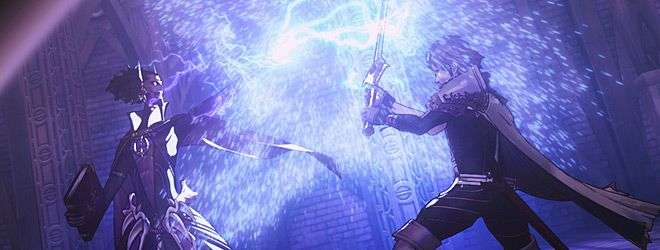






I love me a bit of time travel, so I’m probably going to snap this up!